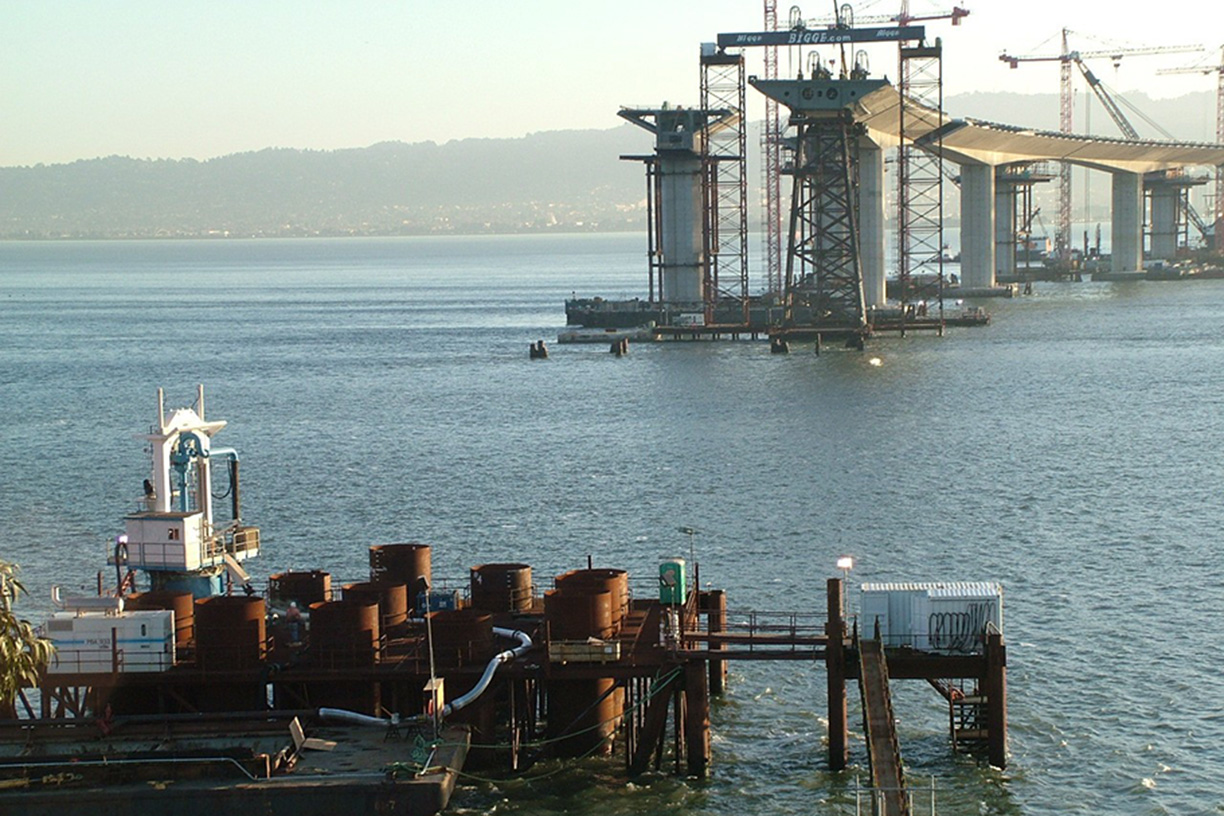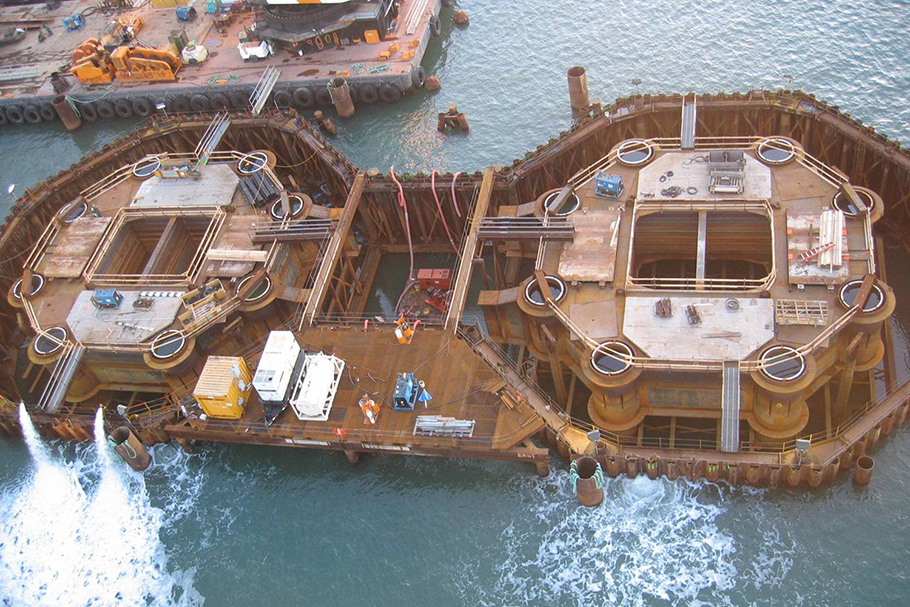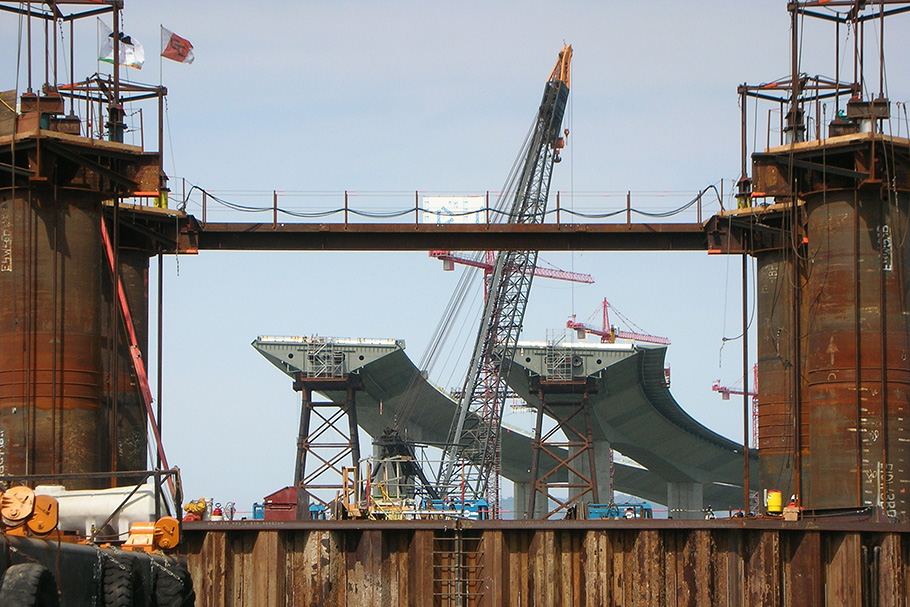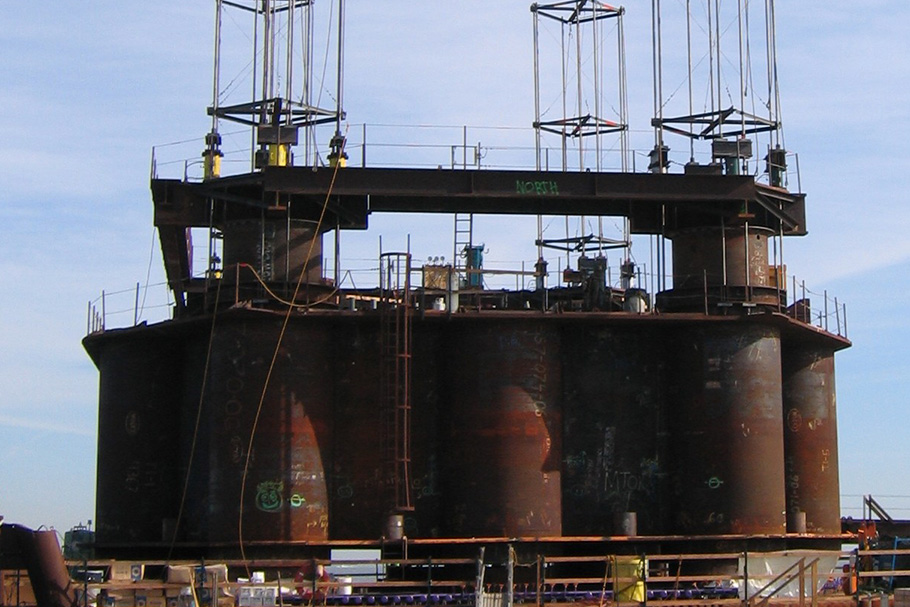Building the San Francisco-Oakland Bay Bridge Foundations
This project included construction of two footings on the San Francisco-Oakland Bay Bridge (SFOBB), known as the E2/T1 foundations. The new SFOBB East Span connects Oakland with Yerba Buena Island. Starting in Oakland, traffic flows onto the Skyway portion of the bridge, travels west towards San Francisco onto the Self-Anchored Suspension (SAS) span and onto Yerba Buena Island where the new East Span ties into an existing bridge. The foundations support the SAS portion of the bridge between the Skyway and Yerba Buena Island. Footing T1 supports the main self-anchored tower while footing E2 will support the east end of the bridge.
The T1 footing, built close to Yerba Buena Island, was founded on a 13-pile 150-ton template that was partially grouted into rock strata. After 13 castings and a 3,500-ton footing were put in place, Flatiron spent more than three months welding the steel footing with large splice plates to piles and structurally reinforcing it with concrete protection.
The E2 footing was built on 16, 2.5-meter piles that were each driven into the ground and spliced into a length of 100 meters. After the piles were connected to the footing box they received a rebar cage and concrete for the slab, wall and in-fills. Due to the complex rebar design, about 80 percent of all rebar had to be in place before any of the concrete could be placed.
The footing box for the T1, measuring approximately 72 feet by 85 feet by 18 feet, was transported by barge from the fabrication yard in Texas through the Panama Canal and north to the project site. The E2 footing, measuring approximately 80 feet by 80 feet by 15 feet, was transported by barge from Oregon.
Two 1,000-ton and one 2,400-ton steel footing boxes
2.2-meter drill bit to drill 30-meter rock sockets
Highly complex rebar design




